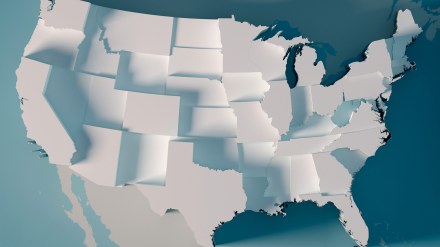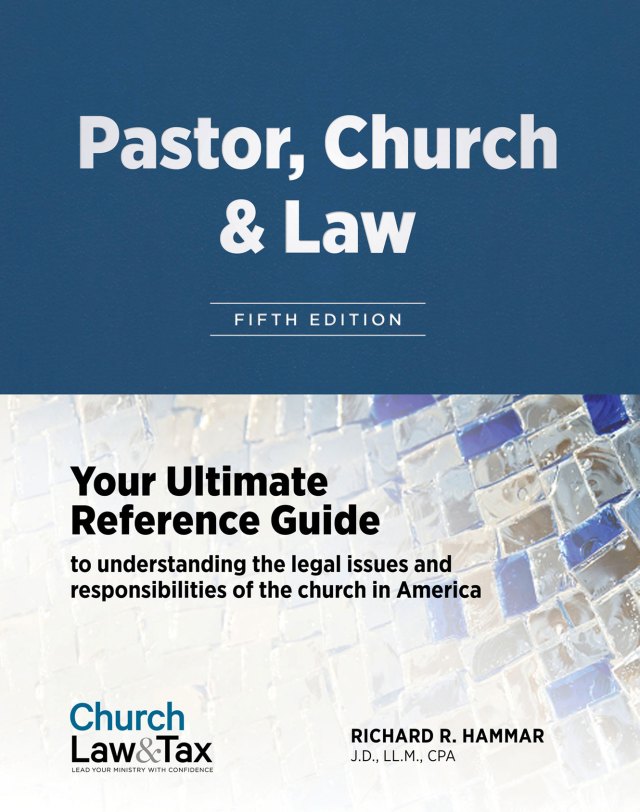This article was adapted exclusively for Church Law & Tax Advantage Members from the 50-State Religious Freedom Laws Report, a downloadable resource available on ChurchLawAndTaxStore.com. Advantage Members who log in to the store receive 20-percent off of their purchase.
The First Amendment to the United States Constitution says, “Congress shall make no law respecting an establishment of religion, or prohibiting the free exercise thereof.” This language has been foundational to the religious liberty that millions of people have enjoyed in this country for nearly 250 years.
In those nearly 250 years, though, two key developments have unfolded through numerous decisions made in our nation’s courts.
First, the protection of religious belief is considered absolute. The government cannot make an individual or church believe—or not believe—something, nor can it create or enforce a law attempting to do so.
But second, the protection of religious exercise has limitations. Individuals and churches are free to believe whatever they wish, but when actions associated with those beliefs begin to clash with the rights and interests of others, courts say the government has more power to regulate.
This latter point—the limitations on religious exercise—has been a source of much debate and disagreement in American society, especially throughout the second half of the 20th century and the early part of the 21st century. For many, religious belief and religious exercise are inseparable, and the ability for the government to regulate religious exercise constitutes an attack on their constitutionally protected beliefs. For others, religious exercise left unchecked represents threats to the rights of others who do not share those same beliefs.
This clash has led to a maze of laws and court decisions across the country that raise a number of questions regarding how far religious freedoms extend. Understanding these developments—and their ramifications—is the purpose of this article, adapted from the 50-State Religious Freedom Laws Report.
Evolving standards
When a government law or action intentionally targets religious exercise, courts apply a high standard of judicial review known as “strict scrutiny.” This means when a party’s free exercise rights have been burdened by such intentional targeting, the government bears the burden of showing the law or action is both necessary to advance a compelling government interest and was crafted in the least-restrictive manner possible. This high standard makes it challenging for the law or action to be upheld, making it a significantly valuable protection to the free exercise rights of individuals, churches, and organizations.
For years, this high standard also was used by courts to evaluate neutral laws of general applicability when they happened to burden religious exercise. In other words, when a neutral law incidentally (not intentionally) interfered with an individual or party’s free exercise rights, the government still had to meet the burden of showing the law possessed a compelling government interest and was advanced in the least-restrictive way. Again, this same high standard offered significant protection to the free exercise rights of individuals, churches, and organizations.
However, in 1990, the US Supreme Court issued a controversial decision in a case called Employment Division v. Smith, 494 U.S. 872 (1990). Through this decision, the Court’s majority held that neutral laws—and the application of these laws—did not need to be justified by a compelling government interest and in the least-restrictive way possible whenever religious exercise was burdened. This conclusion made it more likely that a neutral law (or an action related to that law) could remain constitutionally valid, even when it burdened a party’s religious exercise.
The ensuing controversy from this decision prompted federal legislators to act. In 1993, a near-unanimous Congress responded to Smith by passing the Religious Freedom Restoration Act (RFRA), which aimed to restore the compelling government interest/least-restrictive means standard for evaluating neutral laws, and their application, when their effects on religious exercise came into question.
The passage of RFRA, hailed as a victory by religious liberty advocates, stabilized the situation—but only temporarily. Confusion and concern returned in 1997 when the Supreme Court decided a case called City of Boerne v. Flores, 521 U.S. 507 (1997). The Court’s majority concluded Congress overstepped its legislative powers with RFRA when it attempted to apply it both at the federal level and to the local and state levels. The Constitution, the Court’s majority noted, only gives Congress the power to make laws addressing federal laws and activities.
As a result, City of Boerne rendered the federal RFRA moot when it comes to laws and actions at the local and state levels.
Following this decision, some states—but not all—began adopting their own versions of RFRA, each designed to establish a compelling government interest/least-restrictive means standard for evaluating substantial burdens incidentally placed on religious exercise by neutral laws or actions. In some states where a RFRA has not been adopted, a high-level court has issued a decision mirroring the federal RFRA’s standards. In other states, though, a high-level court has decided the standard announced through the 1990 Smith decision should be used. And in about a dozen other states, no law or court decision announces a specific standard to follow, making it difficult to predict whether a church, organization, or individual can prevail in a religious exercise claim against a local or state government.
Further examining “neutral laws”
Also in 1993, a separate Supreme Court decision in a different case—Church of the Lukumi Babalu Aye v. City of Hialeah, 508 U.S. 520 (1993)—further defined the standards with which all courts should evaluate attempts by the government to regulate religious exercise. The Court’s decision acknowledged there still can be times when a law or regulation appears on the surface to be neutral, but in actuality still intentionally targets religious activity—and thus still deserves “strict scrutiny.”
In Lukumi, the Court determined the city’s ordinance, though described on the surface to be a neutral law of general applicability, was really designed to halt the animal sacrifice practices of a local church. The Court reached this conclusion by noting the city ordinance exempted other, similar types of conduct carried on by secular entities (e.g., butchers), and by noting the notes and transcripts recorded during the adoption of the ordinance showed city councilmembers intended to specifically address the church’s activities.
Because the ordinance was not truly neutral, and targeted religious activity, the Court said the strict scrutiny standard of review applied. It then deemed the ordinance unconstitutional, finding the ordinance did not advance a compelling government interest in the least-restrictive manner possible.
Where that leaves us—and why all of this matters
For churches, the First Amendment—or their state’s constitutional equivalent—should be the first line of defense when government laws or actions intersect with their activities.
But the presence of the federal RFRA, a state RFRA, or a judicially created RFRA-like protection is important to note. When a RFRA or RFRA-like protection exists, it may offer a church additional protections if it faces a claim arguing it falls under a neutral law of general applicability at the local, state, or federal level and violated it—and the applicability of the First Amendment or state constitution is unclear.
CAUTION. Note that a RFRA defense only emerges when a government agency, commission, or other entity initiates or pursues a claim against a church. A RFRA or judicially created RFRA-like protection is less likely, if at all, to apply to a civil lawsuit filed by a private party.
Church leaders always should consult with qualified local counsel in the event it potentially faces any local, state, or federal actions, or a civil lawsuit by a private party.
A state-by-state look
The 50-State Religious Freedom Laws Report is designed to help individuals and churches understand the protections available to them based upon where they live and operate. Below is a chart, based on information from the resource, detailing which states have a RFRA or a high-level court decision addressing religious exercise. The remainder of the resource provides individual state reports containing additional insights. This additional information is useful for churches and church leaders as they seek to understand how legal protections for their religious exercise operate based upon where they are located.
Of note:
- With the passage of a RFRA in Iowa in April of 2024, 27 states, plus the federal government, now have RFRAs;
- Among the 27 states is Utah, which passed a religious land use act in 2005 designed to offer churches RFRA-like protections in property-related matters;
- Numerous jurisdictions have high-level state court decisions (either at the state supreme court level or a state appellate court level) addressing religious exercise claims. Of those, five (5) used the compelling government interest/least restrictive means standard, while seven (7) appeared to use a standard similar to the US Supreme Court’s Smith decision. One (1)—the District of Columbia—announced a standard in 1987 that leaves uncertainty in light of Smith; and,
- Ten (10) states offer no RFRA or RFRA-like protections for free exercise claims made in response to state or local government actions incidentally burdening religious exercise.



